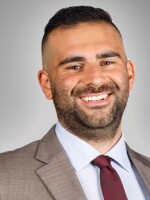ALLENTOWN, Pa. - A Pennsylvania doctor is sharing his thoughts on language barriers in the emergency room, after a carbon monoxide incident sent more than 30 people to the hospital this month in Allentown.
Dr. Jose R. Torradas is an urgent care and ER doctor in the Philadelphia area and also runs a nonprofit called Medicos Unidos in Pennsylvania. It began with the aim of improving COVID-19 vaccine access and has evolved to to help advocate for "culturally competent care" for Spanish-speaking patients.
- Dr. Jose R. Torradas is advocating for more Spanish-speaking doctors in the Lehigh Valley
- More than 50% of Allentown residents are Hispanic, but the numbers aren't not the same for doctors, according to Torrada
- Last week, more than 30 people were sent to area hospitals with carbon monoxide poisoning from an Allentown daycare
- Thanks, in part, to emergency room translators, everybody survived — but still, Torradas said lessons can be learned
Torradas said while everyone survived the Allentown carbon monoxide incident, lessons can still be learned.
"It's not just language, it's culture," he said, referring to the Allentown incident, which required a large team of translators.
"Shared cultural feelings, or how we react in a certain situation — I think those are commonalities that are more similar within cultures. When I've had patients who only speak Spanish, and I walk into the room and can comfortably speak with them in Spanish, they are in a totally different situation of comfort, and being able to relay information," Torradas said.
Translators may not always be enough
From Torradas's perspective, having translators is a step in the right direction, but not exactly the same as having a Spanish-speaking doctor, especially one who is familiar with specific Latino cultures.
"You're talking about some of the worst moments in these folks' lives, moments that they'll never forget, moments that they will need to process emotionally for the rest of their lives."Dr. Jose R. Torradas - Emergency Room physician and advocate
He said this distinction often begins with delivering bad news.
"Think about having to walk into a room where a family has just lost a family member, from a car accident or from a shooting," Torradas said. "I've found myself in that situation, not just with Spanish speakers, but with folks who speak languages I have no idea about. So I have to use the translator phone. And I can sense a difference."
In that situation, he said, the standard protocol would be to phone-in a third-party translation service, who can either relay information through video chat from their cubicle, or sometimes in an audio-only phone call.
This is not the ideal way to deliver serious or urgent information, he said.
"You're talking about some of the worst moments in these folks' lives," Torradas said. "Moments that they'll never forget, moments that they will need to process emotionally for the rest of their lives. As an emergency room doctor, you spend so much of your time holding the hands of people who are dying. People who are seeing the mortality of their loved ones—and facing them in real time. These are some of the most intimate moments of the human experience."
The "échate" example
Torradas said another example of needing culturally competent care is how how not all all Spanish-language words are universal among communities.
Torradas' background is from Spain and Venezuela, which he said comes with subtle cultural differences from Mexican and other Hispanic cultures.
"There's a word I use in Spanish, called 'échate,' [and] échate just means 'lie down.'" Torradas said. "But, échate to Mexicans and Central Americans, it's basically what you tell, like farm animals — like 'get down.'"
He said this has caused some patients to look at him strangely and even caused others to get offended, which can hinder care.
Bilingual care
"The statistic that sits with me is that 6% of physicians are, or identify as, Hispanic," Torradas said. "Whereas nationwide, I believe it's almost 20% [of US residents]. But some cities in the Lehigh Valley or the (Pennsylvania Route) 222 corridor, I believe it's more than half."
Allentown is one of those cities. More than 50% of its residents are Hispanic or Latino, and doctors have said many of the daycare victims could not speak English, only Spanish.
"So, I think we need to be serious about incorporating bilingual study into classes," Torradas said.
"Encourage folks to speak both languages, to learn as much Spanish as they can," he said. "And if there's one major lesson, I think here that needs to be learned, is that medical school and health professional recruitment needs to be — especially in an area with a high Hispanic population like the Lehigh Valley — being of the local culture, being bilingual, needs to be given a greater emphasis than I think it is."
Torradas believes progress on this front is coming, but more is needed.


